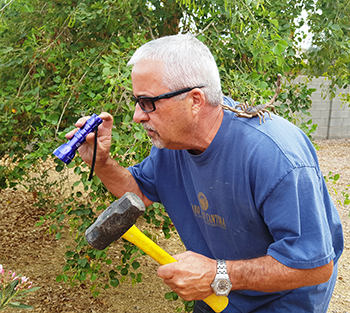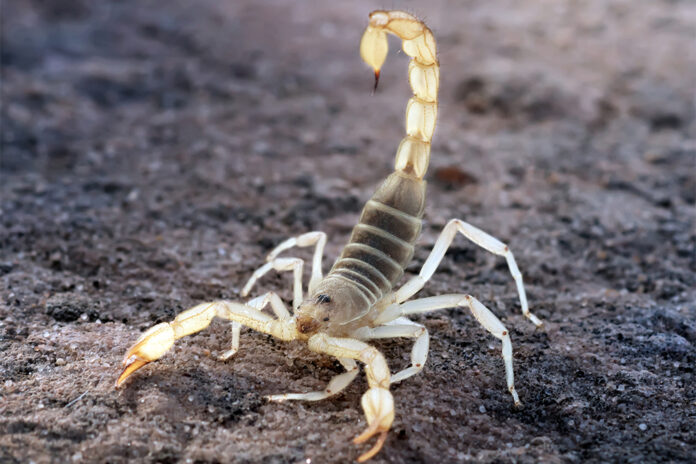By Scott Oliver

“Grandpa, there’s a baby lobster in your garden!”
I have lived in Maricopa for nearly six years now, and I had never encountered a scorpion in my home until last Sunday. I was up that morning before daylight. My son and his family were coming that afternoon for barbecue, and I needed to get a pork shoulder in the smoker.
Still not quite awake, my eyes still adjusting to my surroundings, I went into the laundry room and, there she was, a 2-inch bark scorpion on the wall, eye level, above the dryer. I am happy to report there was no “scorpion dance.” I don’t have major phobias when it comes to bugs and spiders, but a scorpion?
The three most commonly observed scorpions in Arizona are:
- Desert or giant hairy scorpion (hadrurus arizonensis)
- Striped or devil scorpion (vaejovis spinigerus)
- Bark scorpion (centruroides sculpturatus)
Scorpions are one of the oldest animals on Earth. Their evolutionary history goes back to the Silurian era 430 million years ago. They evolved from giant scorpion-like creatures that emerged from the sea. Although they resemble crustaceans like lobsters and crayfish, scorpions actually are more closely related to ticks, mites and spiders.
Keeping scorpions out of your house begins in your yard. If you spot more than one, definitely call an exterminator. I would personally recommend calling only companies that specialize in scorpion control. Scorpions are extremely resilient and don’t respond to pesticides the way other bugs do.
After an initial treatment you can go the DIY route. There are plenty of successful, easily researched strategies available. Do remove dead branches, wood and mulch piles, debris under plants and bushes.
I calmly considered my options, kill or capture. There was a flyswatter within arm’s reach but that’s like taking a spoon to a knife fight. I slowly backed away, went into the garage and picked my 5-pound sledge hammer and returned armed and ready. Positioning myself to the side of the dryer I took a wide stance and dug in. Imagine a baseball player at home plate going through his routine. I just wanted to make solid contact. Slowly, I drew my hammer back, eyes on the target; I’m going to do this.
Scorpions are usually not aggressive unless threatened, and then look out. This trait makes killing or capturing them challenging. They move quickly when they feel threatened, or may do just the opposite and play dead. Apparently, size does matter. Surprisingly, the small, young bark scorpions are the most dangerous.
If you are stung by one, it will hurt like hell, but as with bees, it’s not life-threatening unless you suspect you are allergic or if you are infirm, in which case you should capture or kill the one that stung you and take it with you to a medical facility so the correct anti-venom can be used.
I did not smash my laundry room scorpion, saving myself a drywall repair project. Instead, I captured it in a mason jar for a show-and-tell with the grandkids that afternoon. It turned into a great teaching opportunity. Later that evening I took it to a vacant field a few blocks away and set her free. The next one might not be so lucky.
This column appears in the June issue of InMaricopa.


















![Elena Trails releases home renderings An image of one of 56 elevation renderings submitted to Maricopa's planning department for the Elena Trails subdivison. The developer plans to construct 14 different floor plans, with four elevation styles per plan. [City of Maricopa]](https://www.inmaricopa.com/wp-content/uploads/2024/04/city-041724-elena-trails-rendering-100x70.jpg)